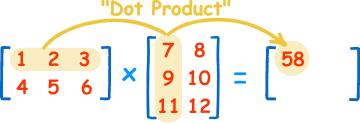Test Informed Learning with Examples

Repository with assignments using the Test Informed Learning with Examples (TILE) method to integrate testing into existing programming courses for free.
Menu
LinkedIN Community
Join our LinkedIN Community.
Cite this work
Use the following BibTeX entry to cite this work:
@INPROCEEDINGS{DVMB2023,
author={Doorn, Niels and Vos, Tanja and Marín, Beatriz and Barendsen, Erik},
booktitle={2023 IEEE Conference on Software Testing, Verification and Validation (ICST)},
title={Set the right example when teaching programming: Test Informed Learning with Examples (TILE)},
year={2023},
volume={},
number={},
pages={269-280},
doi={10.1109/ICST57152.2023.00033}
}
Working with matrices
Write a module with three functions about matrices, and their pytests: sum_of_diagonal, create_matrix and multiply.
1) The first function is (sum_of_diagonal) that, given a \(m\)
matrix of integers, calculates the sum of the integers that are on
the diagonal. Your function has to check that the matrix is square
and does indeed have a diagonal to add. For example:
\({\tt sum of diagonal}( \begin{bmatrix} 1 & 2 & 3 & 4 \\ 2 & 4 & 6 & 1 \\ 0 & 5 & 8 & 2 \\ 2 & 9 & 6 & 3 \\ \end{bmatrix}) = 16\), \(\;\;\) \({\tt sum of diagonal}( \begin{bmatrix} 1 & 5 \\ 3 & 4 \\ \end{bmatrix}) = 5\)
Your function must pass the following tests:
@pytest.mark.parametrize("testcase, input, output",[ (1, [[1,2,3],[4,5,6],[7,8,9]], 15), (2, [[1,0,1],[1,1,0],[1,1,1]], 3), (3, [[2,0],[0,2]], 4), (4, [[2,0],[0,2,3]], "the matrix is not square"), (5, [], 0)]
def test_sum_of_diagonal(testcase, input, output):
assert sum_of_diagonal(input) == output, "case 0".format(testcase)
2) Next, we write a function (create_matrix) that, given two
numbers \(n\) and \(m\), returns a list that represents a matrix with
\(n\) rows and \(m\) columns, all values being 0.
Design a set of test cases and automate them with the pytest.
3) The third function is for (multiply). Given two matrices \(m_1\)
and \(m_2\), returns \(m_1 \times m_2\). Remember1 that we can only
multiply 2 matrices if the number of columns in the \(m_1\) matrix is
equal to the number of rows in the \(m_2\) matrix.

Your function must pass the following tests:
@pytest.mark.parametrize("testcase, input1, input2, output",[(1, [[12,7,3], [4, 5,6], [7, 8,9]], [[5,8,1,2],[6,7,3,0], [4,5,9,1]], [[114, 160, 60, 27], [ 74, 97, 73,14], [119, 157, 112, 23]] ), (2, [[12,7,3, 0], [ 4,5,6,12],[ 6,7,8, 9] ], [[8,5,8,1,2], [6,9,7,3,0], [4,5,9,1,0],[4,5,9,1,0] ], [[150, 138, 172, 36, 24], [134, 155, 229, 37,8], [158, 178, 250, 44, 12] ] ), (3, [], [], [] ),(4,[[]],[[]], "they cannot be multiplied" ), (5,[[]],[[[]]], "they cannot be multiplied" ), (6,[[[]]],[[]], [[]] ) ])
def test_multiply(testcase, input1, input2, output):
assert multiply(input1, input2) == output, "case 0".format(testcase)